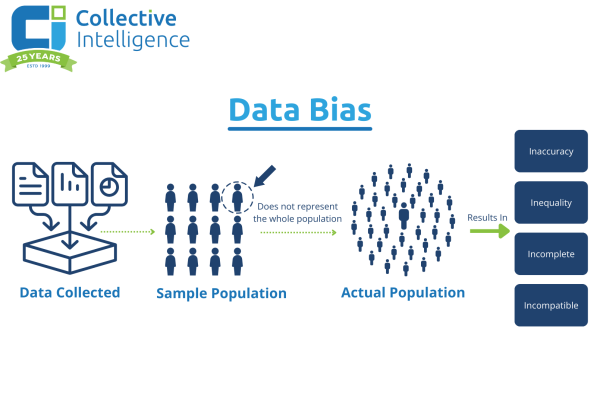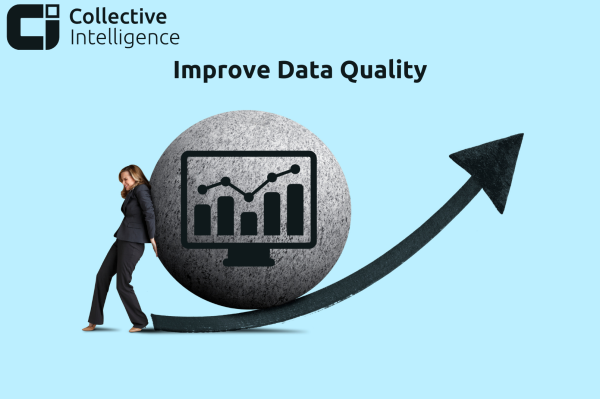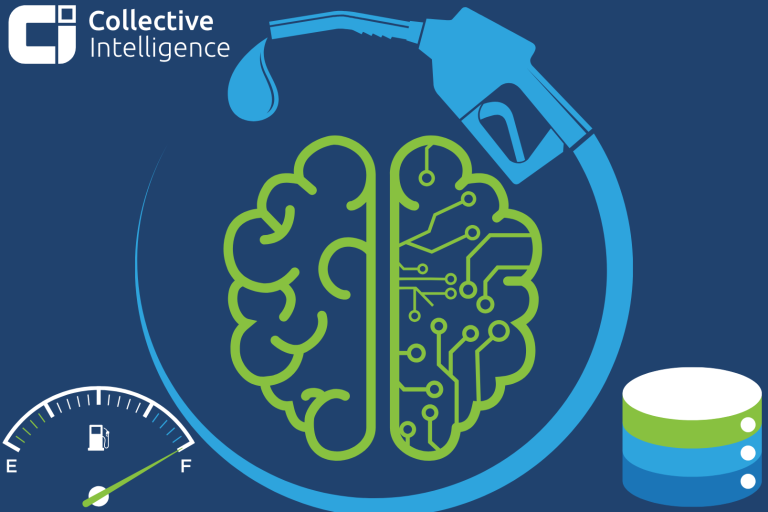
Artificial Intelligence (AI) is revolutionizing industries globally. Fundamentally, data is the fuel for AI, driving its capabilities and advancements. Consequently, without data, AI cannot learn, adapt, or make decisions. Every AI application, from natural language processing to computer vision, relies on vast amounts of data to function effectively.
Imagine AI as a high-performance sports car. Data is the fuel that powers this car, enabling it to reach incredible speeds and navigate complex routes. Without high-quality fuel, even the most advanced car cannot perform at its best. Similarly, without quality data, AI cannot achieve its full potential. Just as a car needs a constant supply of fuel to keep running, AI requires an ever-growing amount of data to continue learning and improving.
Intriguingly, the quality of the fuel determines the car’s performance and efficiency; likewise, high-quality data leads to better AI outcomes. However, too much data can overload the system, just as overfilling a car’s tank can cause issues. Good data ensures optimal performance, allowing AI to operate smoothly and effectively, while also looking impressive in its results.
In this article, we will uncover the pivotal role of data in AI. Specifically, we will explore the types of data, the data lifecycle, and the methods of data collection and processing. We will also discuss the challenges in data management and the emerging trends that are shaping the future of AI. By the end, you will have a comprehensive understanding of why data is truly the fuel for AI.
The Role of Data in AI

Data forms the foundation of AI algorithms. Notably, without data, AI cannot learn or make decisions. Various types of data, such as text, images, and sensor data, are essential for different AI applications. Text data is used in natural language processing, while image data is crucial for computer vision. Sensor data supports applications in the Internet of Things (IoT).
Types of Data
Data can be structured, unstructured, or semi-structured. Structured data is organized in tables, making it easy to analyze, while unstructured data, like text and images, lacks a predefined format. Semi-structured data, such as JSON files, has some organizational properties but is not as rigid as structured data.
Data Annotation
Labeling data is crucial for supervised learning. Annotated data helps algorithms understand and learn from examples. Methods include:
- Manual Labeling: Human annotators manually label data, ensuring high accuracy and context understanding. Although this method is time-consuming, it is essential for complex tasks requiring human judgment, such as sentiment analysis or object detection in images.
- Automated Tools: Alternatively, software tools can automatically label data using predefined rules or machine learning models. These tools can quickly process large datasets but may require human oversight to correct errors and ensure quality. For instance, automated labeling is useful for tasks like text classification and simple image tagging.
- Crowdsourcing: Data is labeled by a large group of people, often through online platforms. This method leverages the collective intelligence of many contributors, speeding up the annotation process. Crowdsourcing is effective for tasks that require diverse perspectives or large-scale data labeling, such as language translation or image recognition. Therefore, it is a valuable tool in modern data processing.
By using these methods, organizations can efficiently create high-quality annotated datasets for training AI models.
Data Lifecycle
Data goes through several stages, from collection to disposal. Each stage is crucial for maintaining data quality and relevance.
- Collection: Start by gathering data from various sources, such as surveys, sensors, and web scraping. This is the initial step in the data lifecycle.
- Storage: Next, the collected data is stored in databases, data lakes, or data warehouses. Proper storage ensures data is accessible and secure.
- Processing: After storage, the data undergoes cleaning and transforming to prepare it for analysis. This includes removing duplicates, correcting errors, and normalizing data.
- Analysis: Following processing, the data is analyzed to extract insights and inform decision-making. Techniques include statistical analysis, machine learning, and data visualization.
- Archiving: Once the data has been analyzed, it may be moved to long-term storage solutions. Archiving helps manage storage costs and maintain system performance.
- Disposal: Finally, data that is no longer needed is securely deleted. Proper disposal ensures compliance with data protection regulations and prevents unauthorized access.
By understanding and managing each stage of the data lifecycle, organizations can maintain high data quality and ensure data remains useful and compliant.
Data Collection and Processing

Collecting data is the first step in AI development. Methods include surveys, sensors, and web scraping. After collection, data must be preprocessed and cleaned to ensure accuracy and usability.
Data Acquisition Methods
Data can be acquired through various methods, including APIs, web scraping, and IoT sensors. APIs allow access to data from other applications, while web scraping extracts information from websites. IoT sensors collect real-time data from the environment.
Data Preprocessing Techniques
Preprocessing involves preparing data for analysis. Specifically, techniques include normalization, transformation, and feature extraction. Normalization scales data to a standard range, while transformation converts data into a suitable format. Feature extraction identifies important attributes from raw data.
Data Cleaning
Cleaning data is a crucial step, as it ensures accuracy. This process involves removing duplicates, correcting errors, and handling missing values. It includes standardizing data formats and validating data integrity. By identifying outliers and inconsistencies, data cleaning reduces biases and enhances reliability. Additionally, clean data ensures reliable and valid results. This results in improved model training efficiency and predictive accuracy. Clean data also facilitates better decision-making, and fosters trust in AI outcomes. Overall, thorough data cleaning is essential for trustworthy AI and effective data-driven strategies.
Data Integration and Storage Solutions
Data integration combines data from multiple sources into a unified dataset. This involves merging datasets, resolving conflicts, and ensuring consistency across formats and structures. Moreover, integration enables a holistic view of information, allowing comprehensive analysis and enhanced accuracy of AI models.
Efficient storage solutions are also essential for managing large datasets and supporting AI-driven insights. For example:
- Cloud storage: Offers scalability and flexibility to expand as data grows.
- Data Lakes: Store raw data in native format for diverse analytics and machine learning.
- Data Warehouses: Organize structured data for easy retrieval and optimized business intelligence.
Together, effective data integration and these storage solutions ensure data is accessible, secure, and ready for comprehensive analysis to enable valuable AI-powered insights.
Training AI Models

AI models learn from data. Essentially, data is the fuel for AI during the training process. Training involves feeding large datasets into algorithms, then allowing them to recognize patterns and make predictions. For instance, image recognition models use thousands of labeled images to learn. These models identify objects, faces, and scenes in new images. On the other hand, natural language processing models analyze text data to understand and generate human language.
Types of Learning
AI training involves different learning types, including supervised, unsupervised, and reinforcement learning. Supervised learning uses labeled data to train models, while unsupervised learning finds patterns in unlabeled data. Reinforcement learning trains models through trial and error, using rewards and penalties.
Model Selection
Choosing the right model depends on several criteria, such as complexity, interpretability, and performance. Simple models are easier to interpret but may lack accuracy. Conversely, complex models, like deep neural networks, offer high performance but are harder to understand.
Training Algorithms
Common algorithms include gradient descent, decision trees, and neural networks. For example, gradient descent optimizes model parameters by minimizing error. Decision trees split data into branches to make predictions. Neural networks, inspired by the human brain, consist of layers of interconnected nodes.
Hyperparameter Tuning
Hyperparameter tuning optimizes the adjustable parameters, known as hyperparameters, that influence an AI model’s performance. This process is essential, as selecting the right hyperparameters can significantly impact accuracy, speed, and efficiency. Techniques like grid search, random search, and Bayesian optimization help identify the best parameter values by testing various combinations. In particular, grid search exhaustively examines all possible combinations, while random search explores a random subset, balancing thoroughness and efficiency.
Bayesian optimization is an advanced method that uses probability models to predict which hyperparameters are most likely to improve performance, allowing for faster, more targeted tuning. Proper tuning enhances model accuracy, resulting in minimized errors, and optimized efficiency, ensuring reliable results in real-world applications.
Validation and Testing
Validation and testing are essential steps to ensure models generalize well to new data, providing reliable and accurate predictions. Validation involves using a separate dataset, distinct from the training set, to fine-tune the model’s parameters and minimize overfitting. Furthermore, techniques like cross-validation enhance model reliability by dividing the dataset into multiple folds, allowing the model to train and validate on different segments.
Testing, on the other hand, evaluates the model’s performance on completely unseen data, offering an unbiased accuracy measure. This step assesses the model’s true predictive power and identifies any limitations in real-world scenarios. Effective validation and testing help ensure that models are robust, dependable, and ready for deployment in diverse applications.
Model Evaluation Metrics
Metrics like accuracy, precision, recall, and F1 score evaluate model performance. Specifically, accuracy measures the percentage of correct predictions while precision indicates the proportion of true positive results. Recall shows the ability to identify all relevant instances whereas the F1 score balances precision and recall.
Data Quality and Quantity

High-quality and sufficient data is vital for optimal AI performance. Errors or biases in data can lead to inaccurate results, while large datasets improve model accuracy by providing more examples for learning.
- Data Accuracy: Ensuring data accuracy is essential for reliable AI outcomes. This involves validating and verifying data sources and entries.
- Data Completeness: Complete datasets are necessary for comprehensive analysis. Handling missing data through imputation or exclusion is crucial for maintaining dataset integrity.
- Data Consistency: Consistent data across different sources and time periods ensures reliable analysis. Consistency checks help identify and resolve discrepancies.
- Data Timeliness: Up-to-date data is critical for relevant AI applications. Regular updates and real-time data processing maintain data timeliness.
- Data Relevance: The data must be relevant to the specific AI application. Irrelevant data can introduce noise and reduce model performance.
- Data Diversity: Diverse data improves model robustness and generalization. Including varied data sources and types helps models perform well in different scenarios.
- Data Provenance: Tracking the origin and history of data ensures reliability. Provenance information helps verify data authenticity and quality.
- Data Volume: Handling large volumes of data presents challenges and benefits. High data volume enhances model training but requires efficient storage and processing solutions.
Quality data must be accurate, complete, consistent, timely, relevant, and diverse. A sufficient quantity of data ensures the model has enough examples to generalize well.
Challenges in Data Management
Managing data comes with significant challenges. Chief among them are privacy and security concerns, which require comprehensive measures to protect sensitive information. Powerful encryption and access controls are essential for maintaining data security.
Additionally, data biases pose substantial risks, necessitating careful handling to ensure fairness. Biases in data can lead to unfair or discriminatory outcomes in AI systems.
Examples of Data Biases

Data biases can significantly impact AI outcomes. Some common examples include:
- Sampling Bias: Training data that fails to represent the entire population, resulting in skewed results. For instance, a facial recognition system trained on a specific demographic may not perform well on others.
- Confirmation Bias: Selective data gathering that confirms pre-existing beliefs while ignoring contradictory evidence. Unfortunately, this can reinforce stereotypes and prevent objective analysis.
- Historical Bias: Past data that reflects historical inequalities, which are then perpetuated in AI models. For example, hiring algorithms trained on biased historical data may favor certain groups.
- Measurement Bias: Data collection methods that introduce systematic errors, compromising the accuracy of the information. Consequently, inaccurate sensors or flawed survey questions can lead to misleading data.
Addressing these biases is crucial for developing fair and accurate AI systems. Therefore, it is essential to implement strategies that mitigate these biases.
Practical Ways to Improve Data Quality

Improving data quality is essential for effective AI. Practical methods include:
- Data Profiling and Cleansing: Regularly analyze and clean data to remove errors and inconsistencies, ensuring the data is accurate and reliable.
- Data Governance: Implement comprehensive data governance frameworks to ensure data integrity and compliance. Specifically, governance includes policies, procedures, and standards for data management.
- Continuous Monitoring: Use automated tools to continuously monitor data quality and address issues promptly. Consequently, monitoring helps detect and correct problems early.
- Data Integration: Standardize and integrate data from various sources to ensure consistency and completeness. Integration combines data from different systems resulting in a unified view.
By implementing these practices, organizations can maintain high data quality, enhancing AI performance and reliability.
Partnering with Collective Intelligence

Collective Intelligence is at the forefront of harnessing AI and machine learning. They offer comprehensive solutions for modern data management, including data vaults, data lakes, and big-data toolkits. Partnering with them provides businesses with the expertise needed to unlock AI’s full potential. Their services ensure efficient data collection, processing, and analysis, enhancing AI capabilities.
Collective Intelligence utilizes a suite of tools and services to enhance data and AI solutions. These include:
- Power BI: Enable data visualization and business intelligence, empowering data-driven decisions.
- Power Automate: Automate workflows to increase operational efficiency.
- Microsoft Fabric: Integrate and manage data across diverse environments, providing a unified view.
- Customer Service Bots: Enhance customer interactions with AI-driven chat support.
- Databricks: Support big data processing and machine learning for advanced analytics.
- SharePoint: Facilitate efficient data storage, management, and collaboration.
- ServiceNow Integration: Streamline IT service management and automates enterprise workflows, supporting comprehensive data management.
By incorporating these tools and services, Collective Intelligence empowers businesses to harness their data fully, driving innovation and growth.
The Future of AI and Data

As AI technology continues to progress, new and exciting opportunities will emerge. Critically, data remains the fuel for AI, enabling systems to extract even more value and insights from vast and ever-growing data pools. Did you know that 90% of the world’s data has been generated in just the past two years? This staggering statistic highlights the explosive growth of data and its critical role in driving AI advancements.
The continued evolution of emerging trends, such as generative AI and data democratization, will be instrumental in shaping the future landscape. As AI capabilities advance, the symbiotic relationship between data and AI will grow stronger, ultimately driving further innovation and efficiency across numerous industries and applications.
This synergistic relationship between data and AI continues to evolve. As a result, we can expect to see even more impressive capabilities emerge, revolutionizing industries and transforming the way we live, work, and interact with the world around us. The future holds boundless potential, where data and AI work in harmony to drive unprecedented innovation and progress.
Conclusion

Data is the fundamental building block that powers the remarkable capabilities of AI. By fully grasping the vital role of data as the fuel for AI, organizations can unlock the true potential of artificial intelligence and leverage it to drive transformative change.
To fully leverage AI, businesses must focus on data quality, security, and ethical use. Maintaining high standards of data management, including comprehensive governance frameworks and continuous monitoring, is crucial.
Additionally, partnering with specialized data and AI experts, such as Collective Intelligence, can provide the necessary domain expertise and technology solutions to extract maximum value from data. With the right approach, data can drive unprecedented innovation and growth.
Looking ahead, the synergistic relationship between data and AI will only continue to strengthen. As AI models become more sophisticated, the quality, quantity, and diversity of data will be paramount. Essentially, data remains the fuel for AI, enabling increasingly advanced technological breakthroughs.
By embracing this powerful data-AI symbiosis, organizations can position themselves for unprecedented innovation and growth. The future holds boundless potential, where data and AI work in harmony to revolutionize industries, transform the way we live and work, and build a more intelligent world for all.
To learn more about how your organization can fully capitalize on the power of data and AI, reach out to the team at Collective Intelligence to schedule a virtual meeting here.